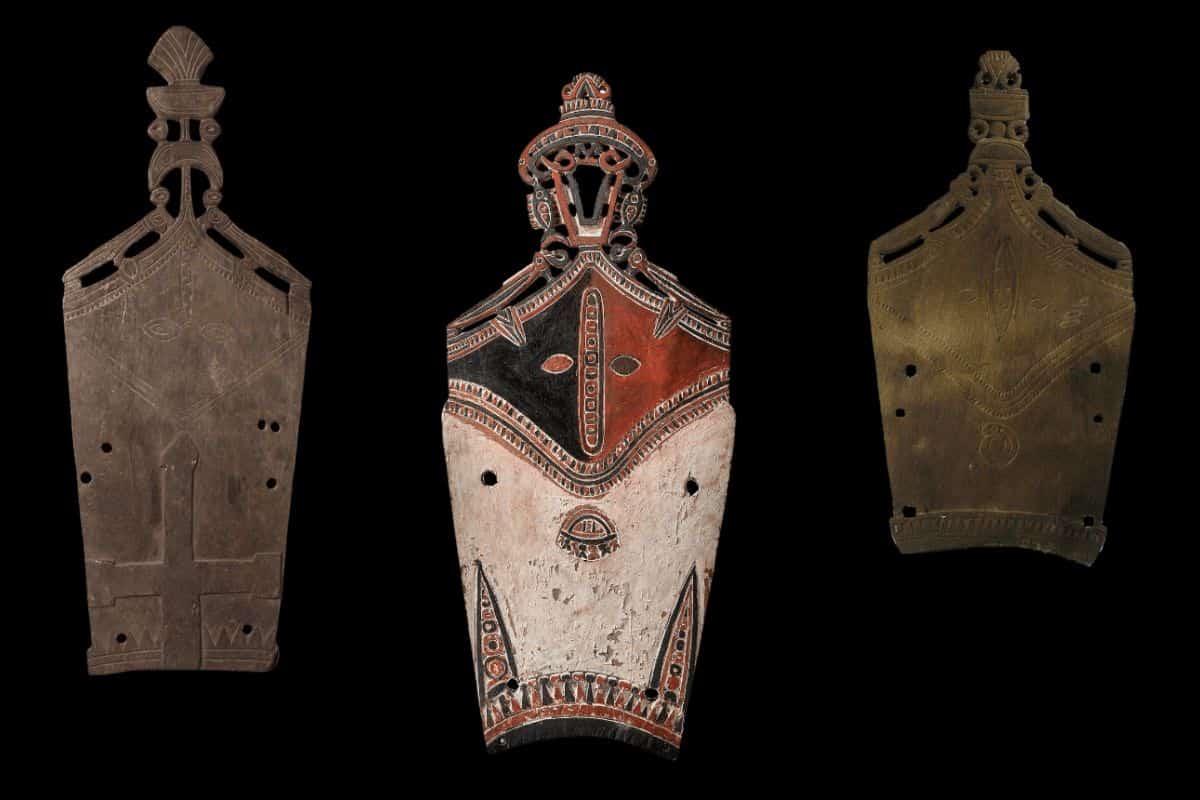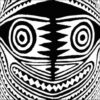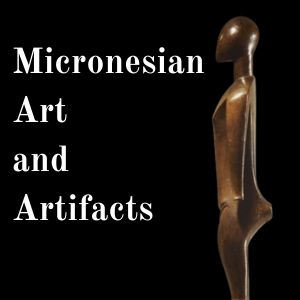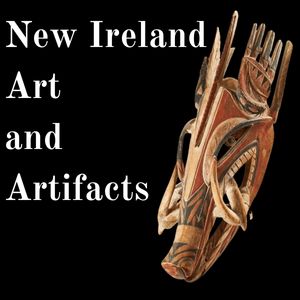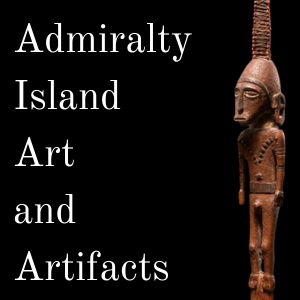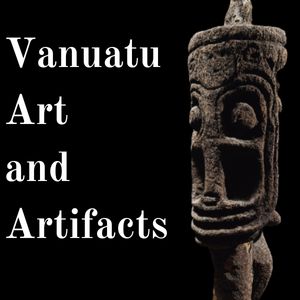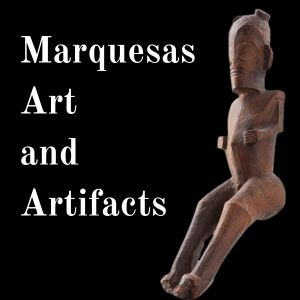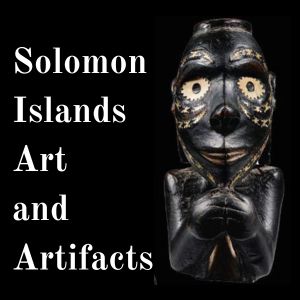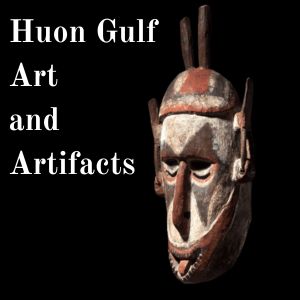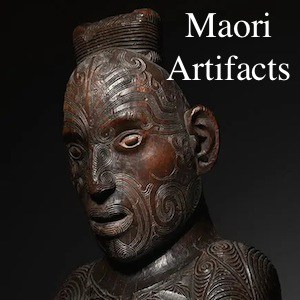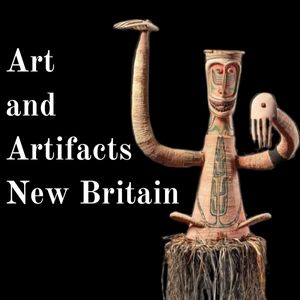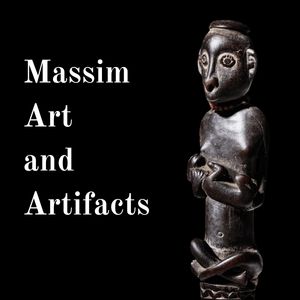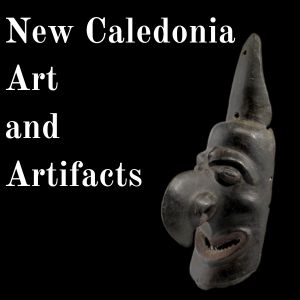Huon Gulf Art and Artifacts
Not a lot of collectors, collect old Huon Gulf Art and Artifacts alone and they are usually collected by general collectors of Oceanic Art. Artifacts to be of much value must have been made for indigenous use. Artistically the huon gulf is closely tied to both West New Britain and Astrolab bay.
The area is probably best known for the vast number of feast dishes and scoops. Masks are still danced and still reverered.
This article can not cover all the art from tthe huon gulf but covers the more common art and artifacts produced. The most collectable pieces from this area are pieces with cubistic figures either free standing or as a part of a head rest hook or Betelnut mortar.
I buy and sell Huon Gulf art and Artifacts and the process is easy. Please send me a photo of your Huon Gulf Art of Artifact and I will give you an idea of what I would be willing to buy it for.
I hope you enjoy the article and please feel free to share.
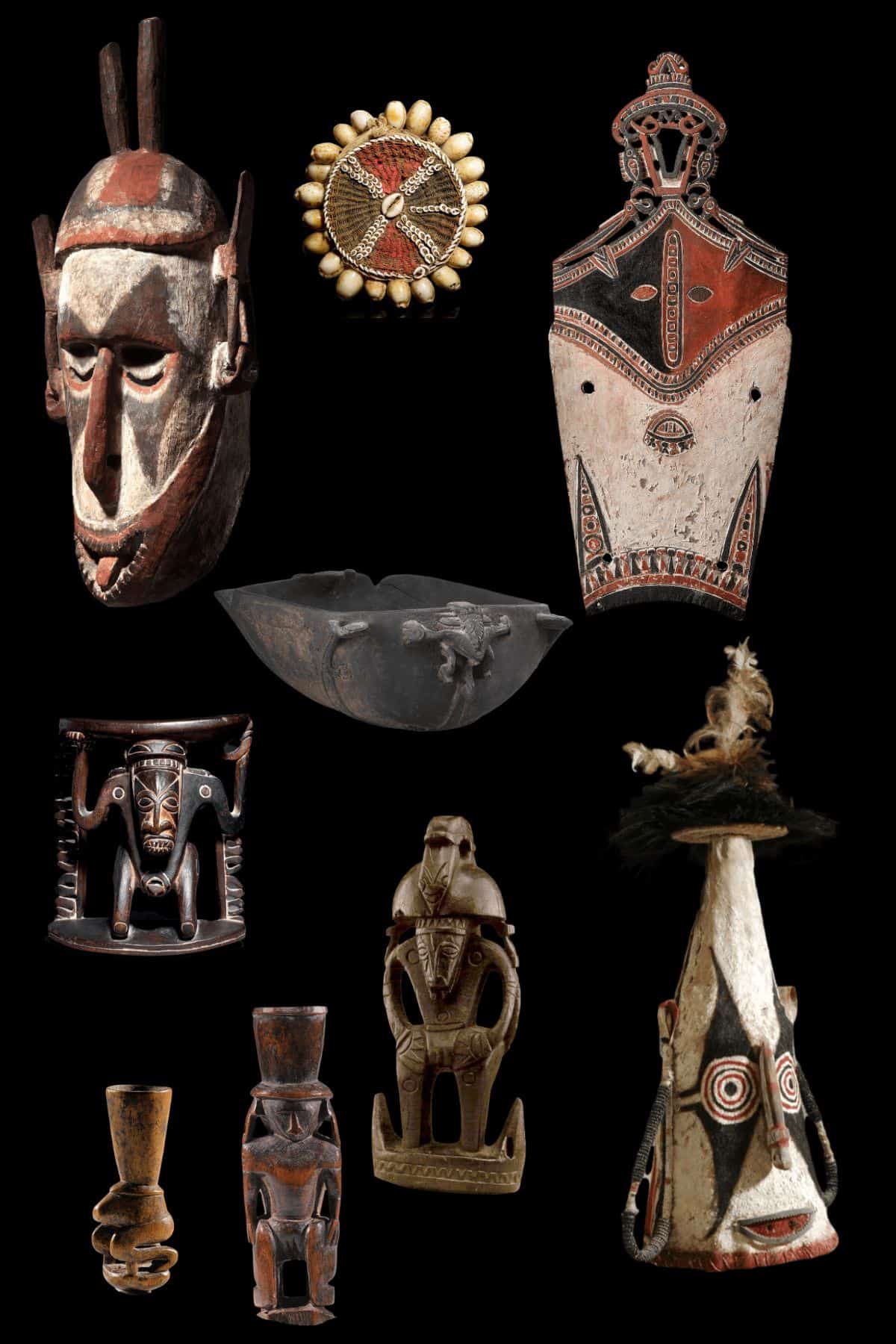
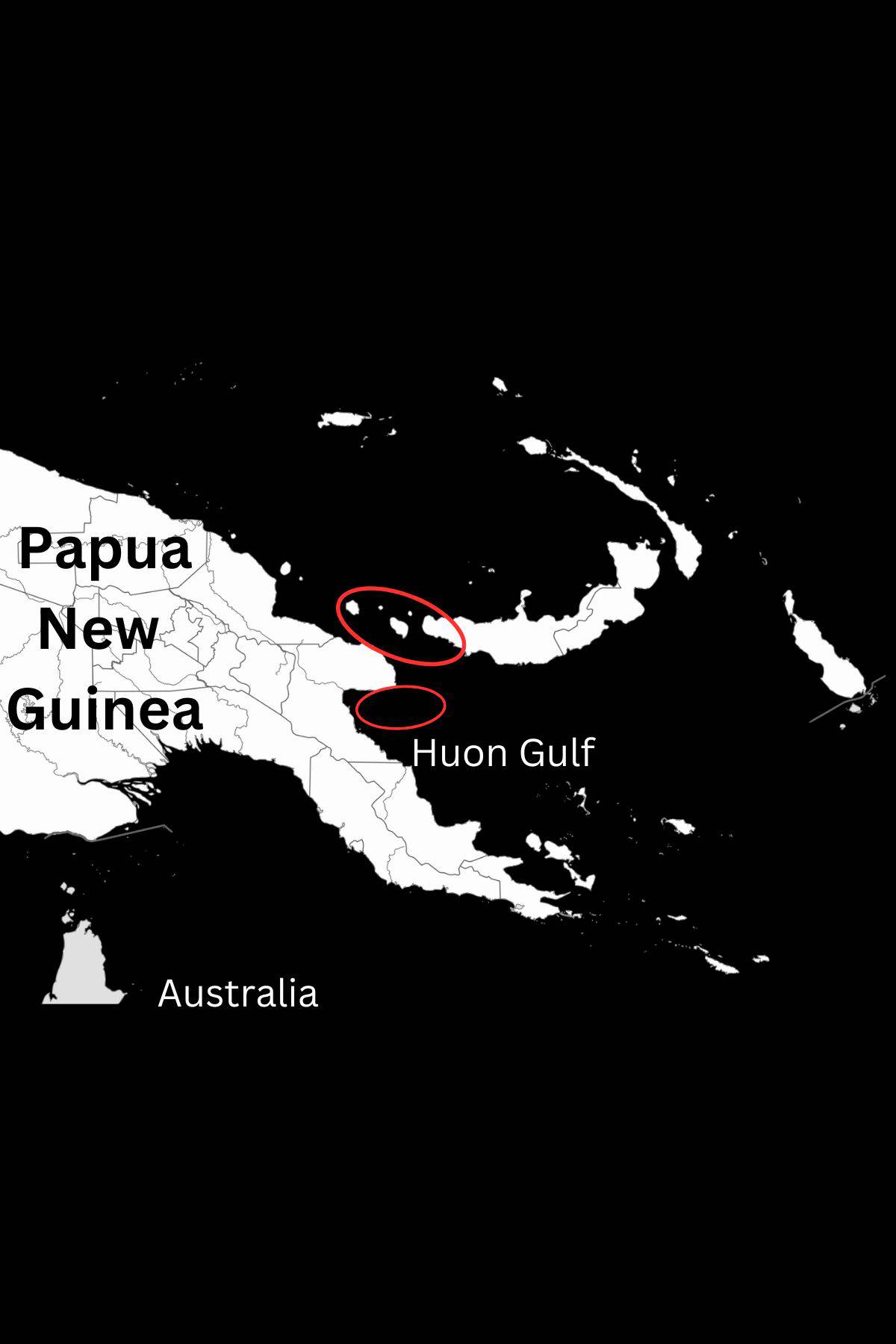
Background of Huon Gulf Art and Artifacts
The Huon Gulf is a large gulf located on the northeastern coast of Papua New Guinea. It is named after Jean-Michel Huon de Kermadec, a French naval officer who explored the area in the late 18th century.
The people of the Huon Gulf were sailors and traders. They are known to have travelled as far as Manus island offshore from the Mouth of the Sepik and to the border with Collingwood bay.
Much of the art is influenced by an ancestral hero who arrived first in Astrolab bay but then travelled as far as Kilinge. He introduced a masking cult to the locals, the secret of circular pig tusks and sailing and trade.
Huon Gulf art is named after the art style of the Tami islands in the Huon Gulf but actually most of the art comes from the islands to the north like Siassi, long island and West New Britain.
During World War II, the Huon Gulf was the site of intense military operations between Allied and Japanese forces. In 1942, the Japanese captured Lae and Salamaua, two important towns on the northern coast of the Gulf. These locations served as key bases for the Japanese as they sought to expand their influence in the Pacific. The Huon Gulf has played a significant role in the history of Papua New Guinea, particularly during World War II.
Mission influence caused cultural loss especially on Tami island but had less influence in the north. Today masks are still danced and in remote areas still revered as they have always been.
Huon Gulf Art and Artifact Types
Sculpture
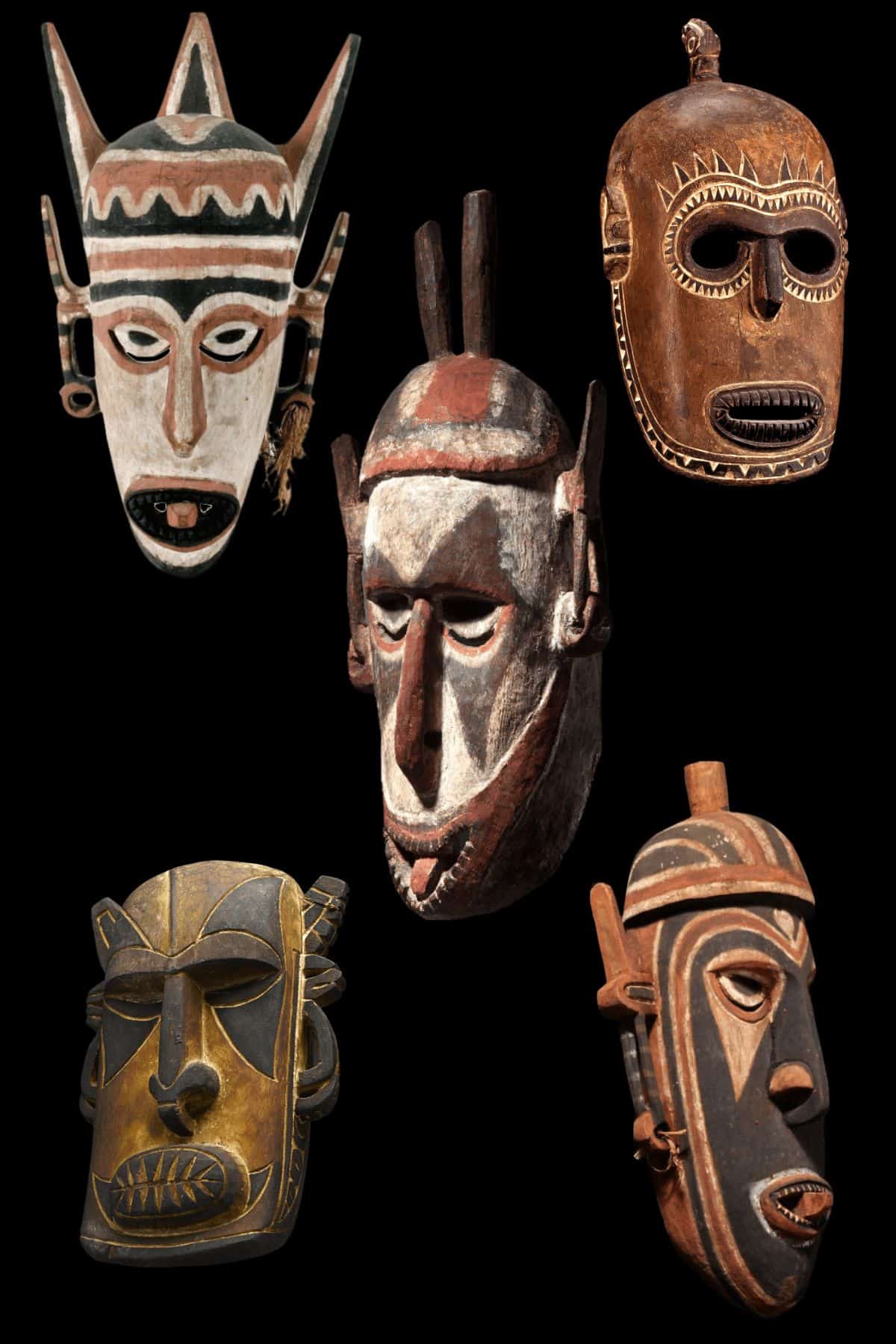
Huon Gulf Wooden masks
Wooden masks are rare in collections because of their sacred nature. Some made for sale masks from Tami Island have been made but not until the 1950’s.
Good masks should have slit ear lobes, a protruding tongue and holes near the mouth for insertion of a bull roarer.
The masked dancer sees through slits below the painted eyes and the reverse of the mask will have holes for attachment to a cane frame.
Masks were usually adorned with aditional feathers onpole or poles on the top. The cult of these wooden masks was extremely expensive to enter costing over 20 pigs and as a result has become less popular. The main mask culture to survive involves fibre tumbuwan style masks.
Length of Masks
30cm -70cm
Huon Gulf Fibre masks
These masks are usually made from coconut fibre but often have cane or wood attachments for ears and nose. There are two main styles. The first style is a tumbuwan conical mask which is more common in West new Britain and probably travelled with that cult from that area. The other form is a more naturalistic face and appears to have originated on Siaasi or Long island.
These masks are collectable if they are in very good condition but are prone to damage.
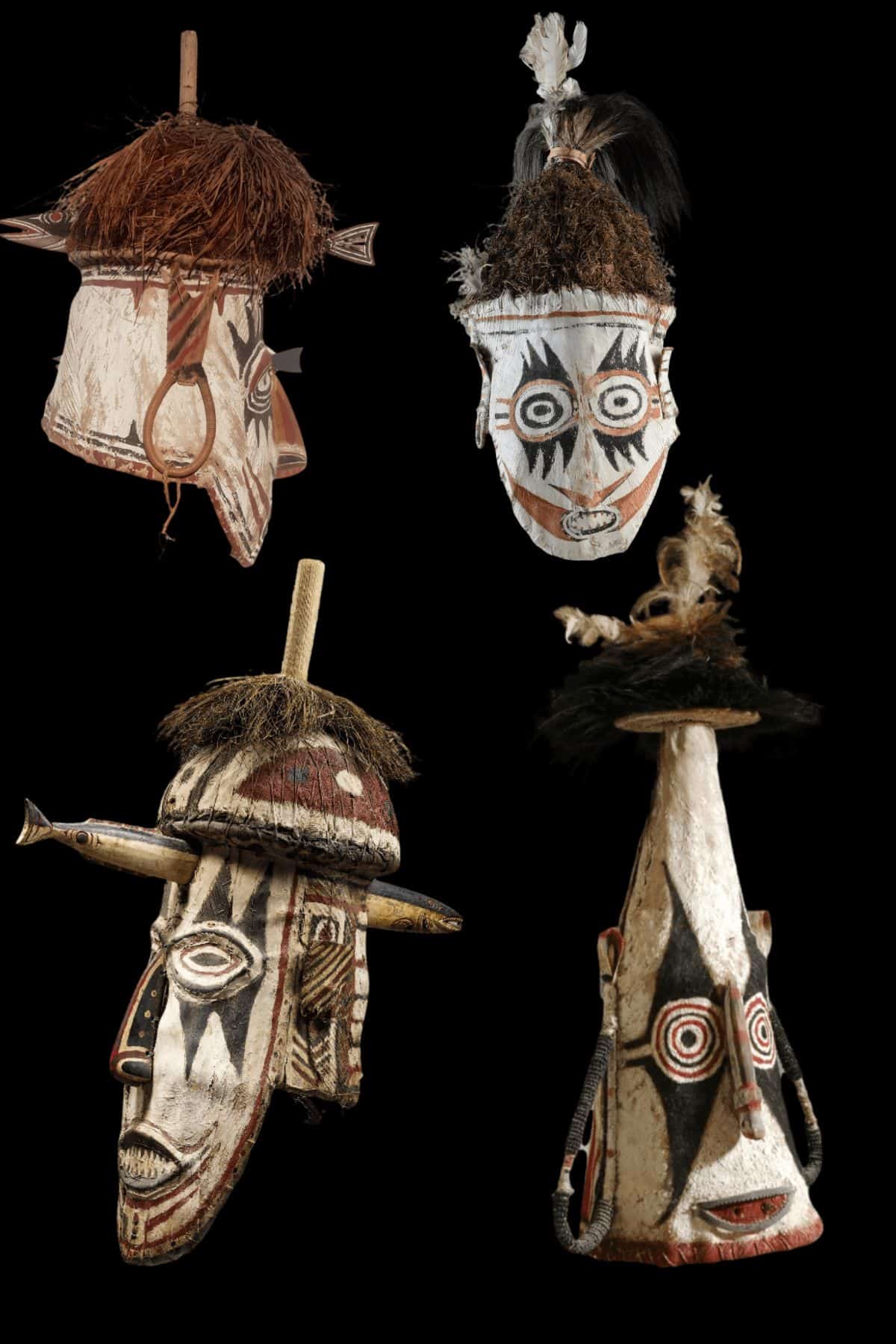
Huon Gulf Head rests
Some of the best figurative art from the Huon Gulf can be found on its carved head rests. These figures tend to be cubistic with exaggerated heads.
Head rests were not only a status symbol they played a practicle role. In more traditional times big men used to ochre their hair. In order to not have to use to much ochre they would sleep with their hair do off the ground using a neck rest for support.
The quality of carving tends to be high and often includes abstract representations of circular pig tusks.
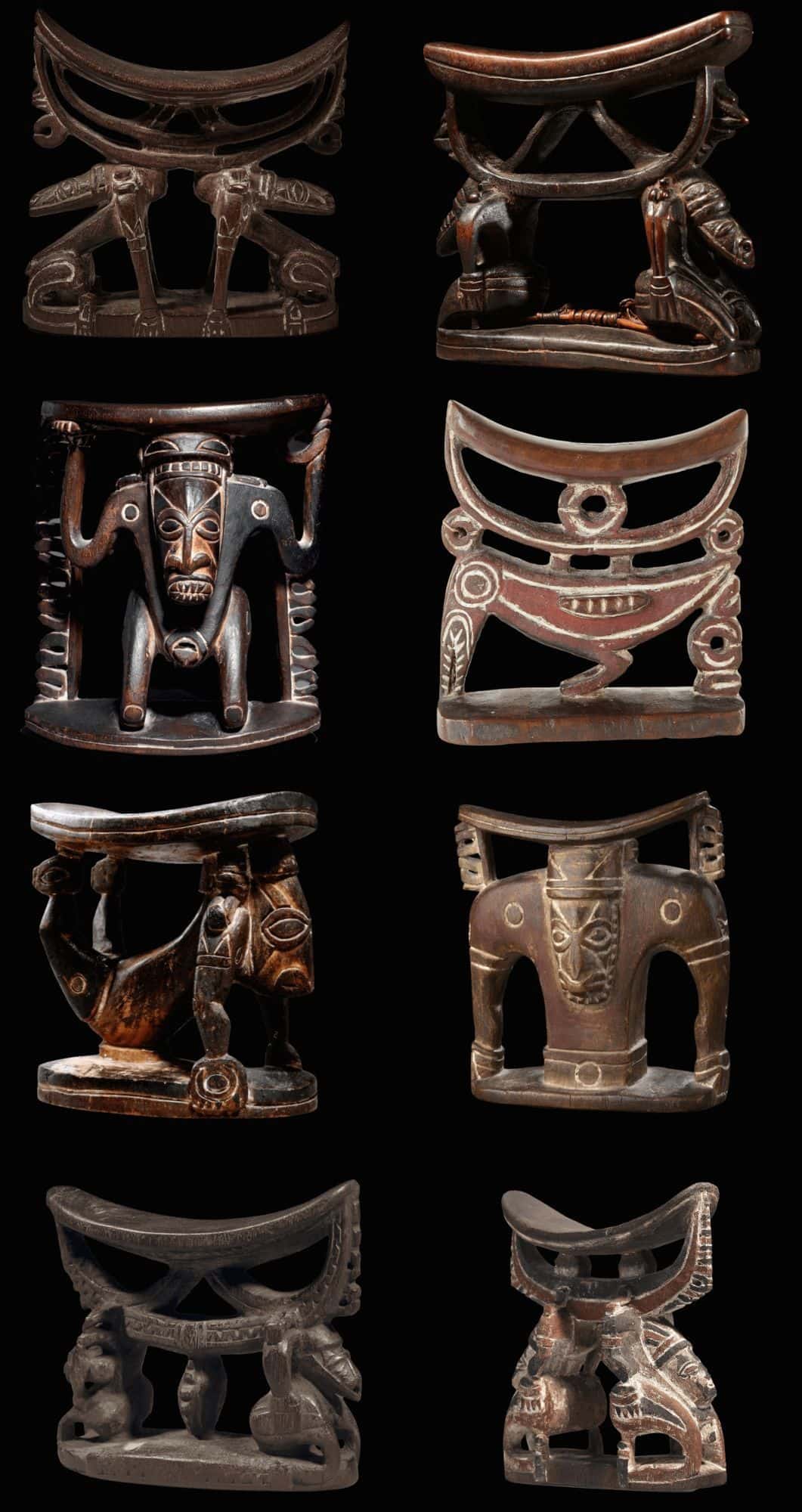
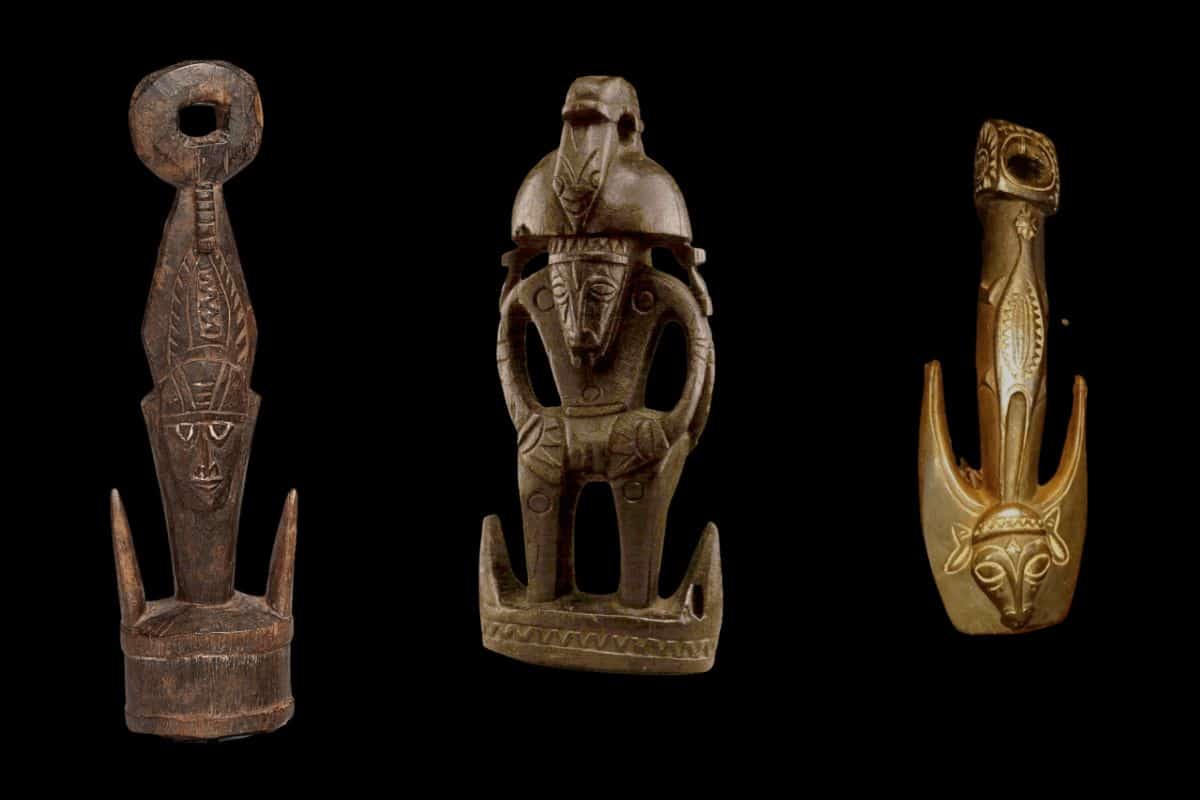
Huon Gulf Food Hooks
Compared to the sepik food hooks from this area are rare. They were used in the Hausman to suspend bags of food so that the food could not be eaten by rats. A used food hook should show signs of wear on the hooks and suspension hole..
Food hooks with a full length figure are the most desirable and collectable
Huon Gulf Art and Artifacts Betelnut Mortars
There is a vast array of different types of Betelnut mortars from the huon Gulf. They are often undervalued by collectors due to their small size. The variety however is endless and most incorporate a figure.
Limesticks in the Huon Gulf are rare and made from bone with turtle shell. The absence of limesticks is due to the fact most betel Cewers in this area use mustard plant to transport lime to the mouth.
Figures on old betelnut mortars often have slit ears as this was an important sign of initiation amongst men and women.
Mortars are made from various hardwoods
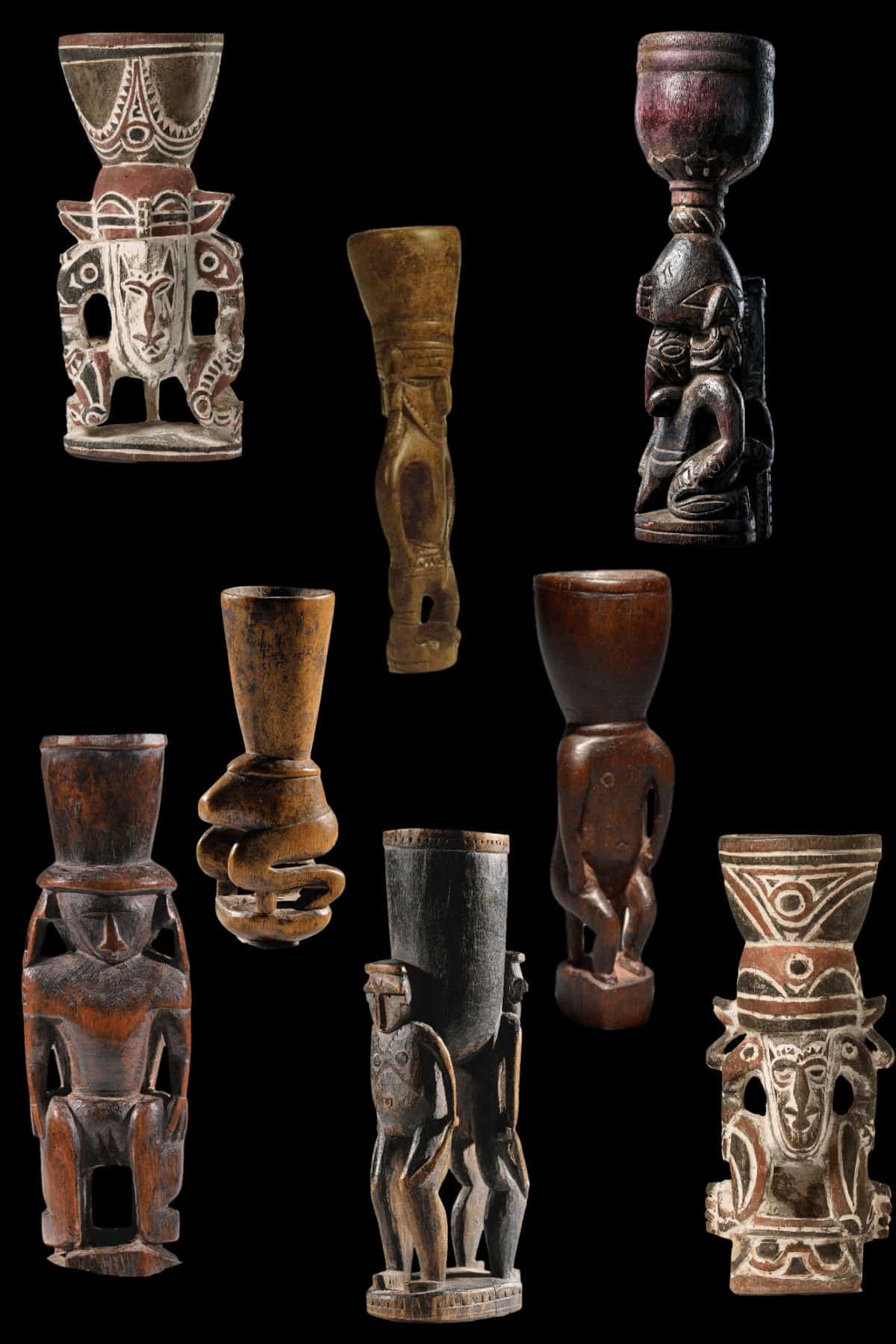
Length of Spatula’s 35cm – 55 cm
Bowls and ladels
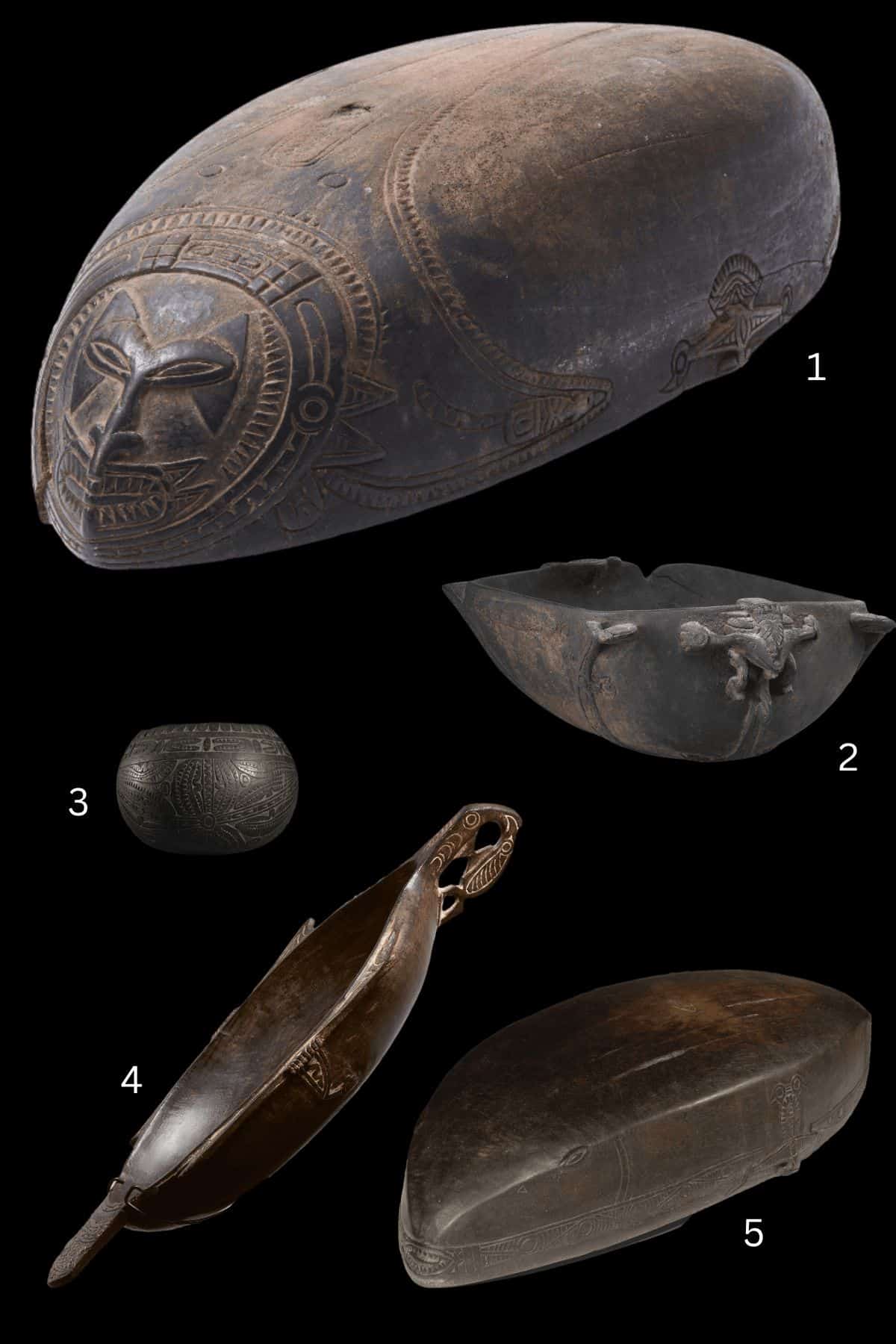
Huon Gulf Bowls
Huon Gulf bowls were traded and have been found as far away as the middle Sepik. Every hausman used to have at least one large feasting bowl.
Middle sized bowls are very common as it was custon to present food in a carved bowl as a part of the bride price.
Small bowls are rare and were used to prevent circumcision blood from touching the ground.
1. Large communual feast bowl
2. Tami island style square bowl
3. Drinking coconut
4. Medium sized bride price bowl shaped like a frigate bird catching a fish
5. Rare form of bowl in the shape of a puffer fish.
Huon Gulf bowls are common so really they have to be exceptional to be very collectable.
Length of Daggers 30cm – 60cm
Huon Gulf Food Scoops
These were only used with feast bowls and often have faces or full figures.
Determining how collectable they are really depends on the figurative carving incorporated in the scoop
Recommended Reading
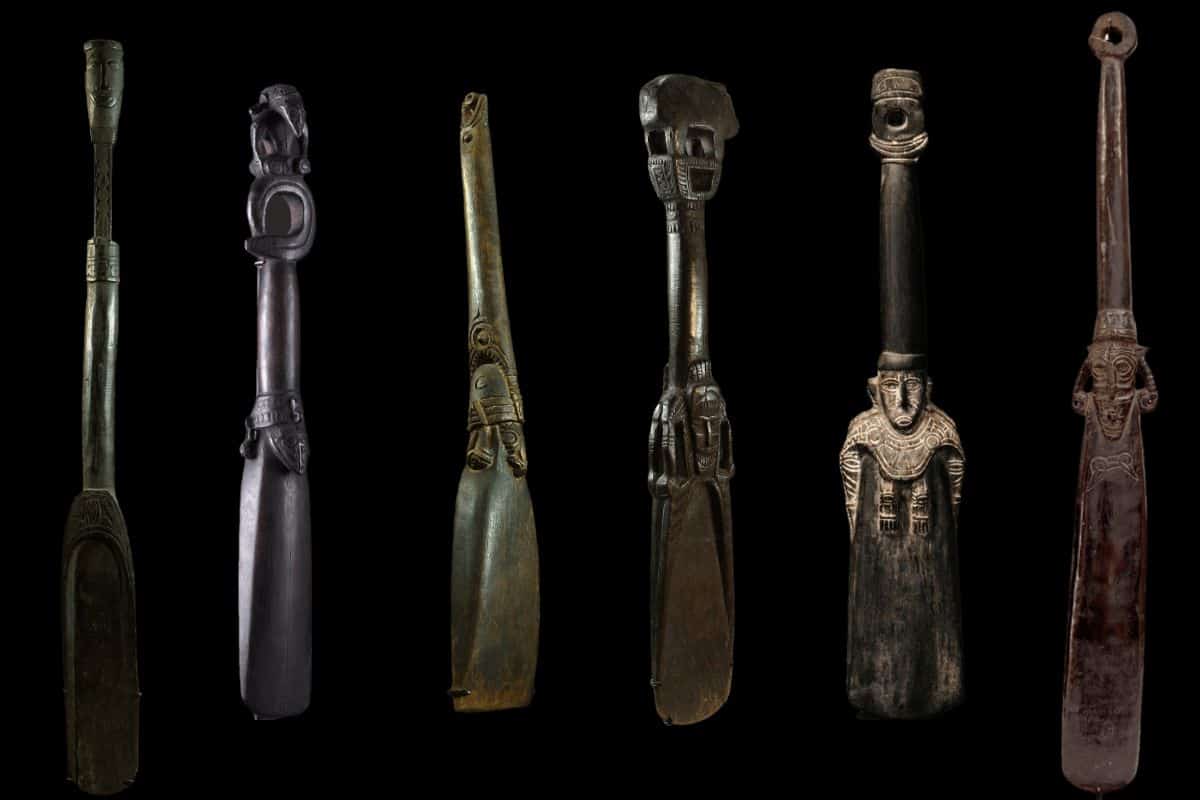
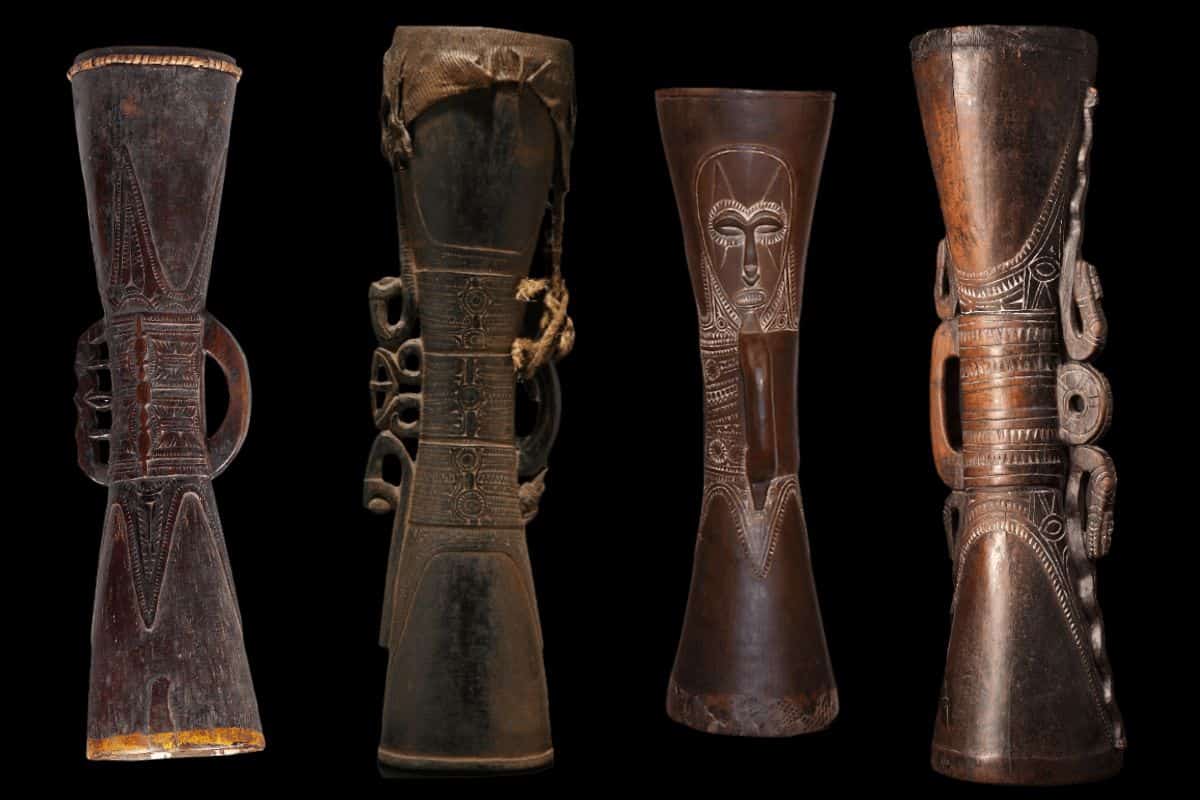
Huon Gulf Drums 60cm – 70cm.
These are realtively common and need to be exceptional to be collectable.
Huon Gulf Art and artifacts Adornments
Admiralty Island Marriage Apron
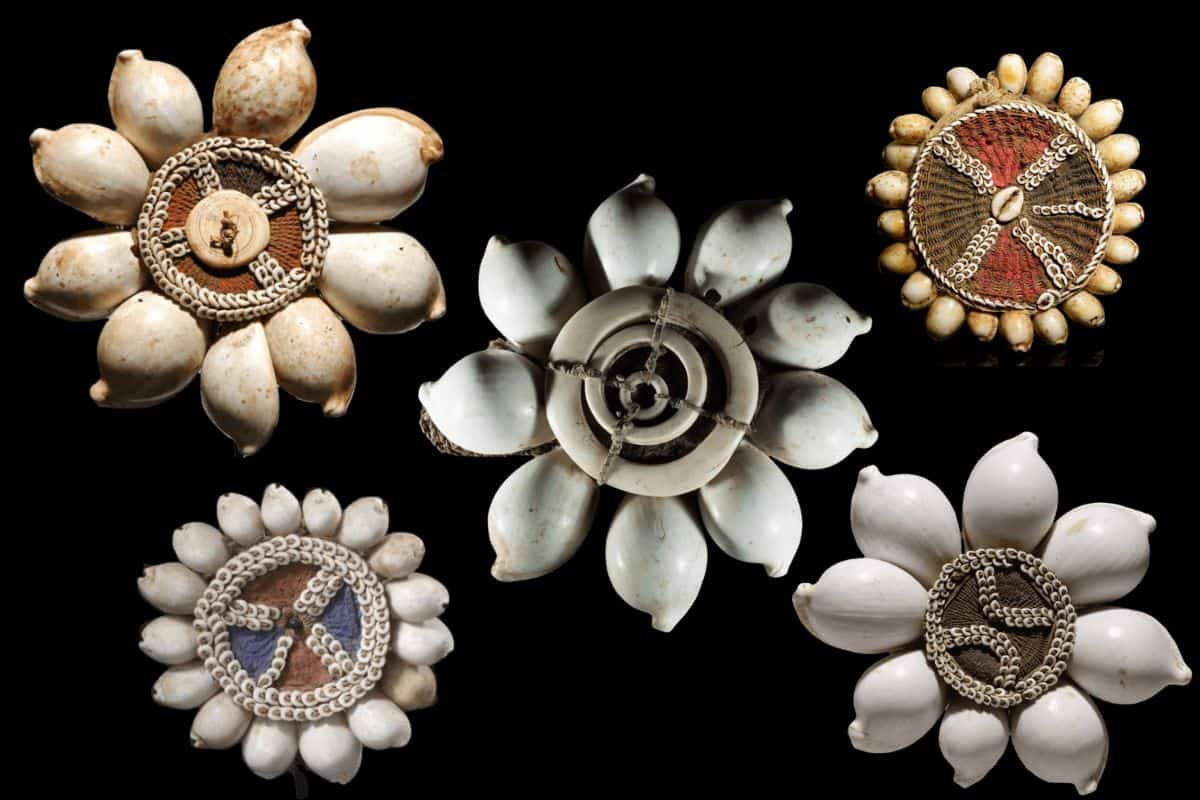
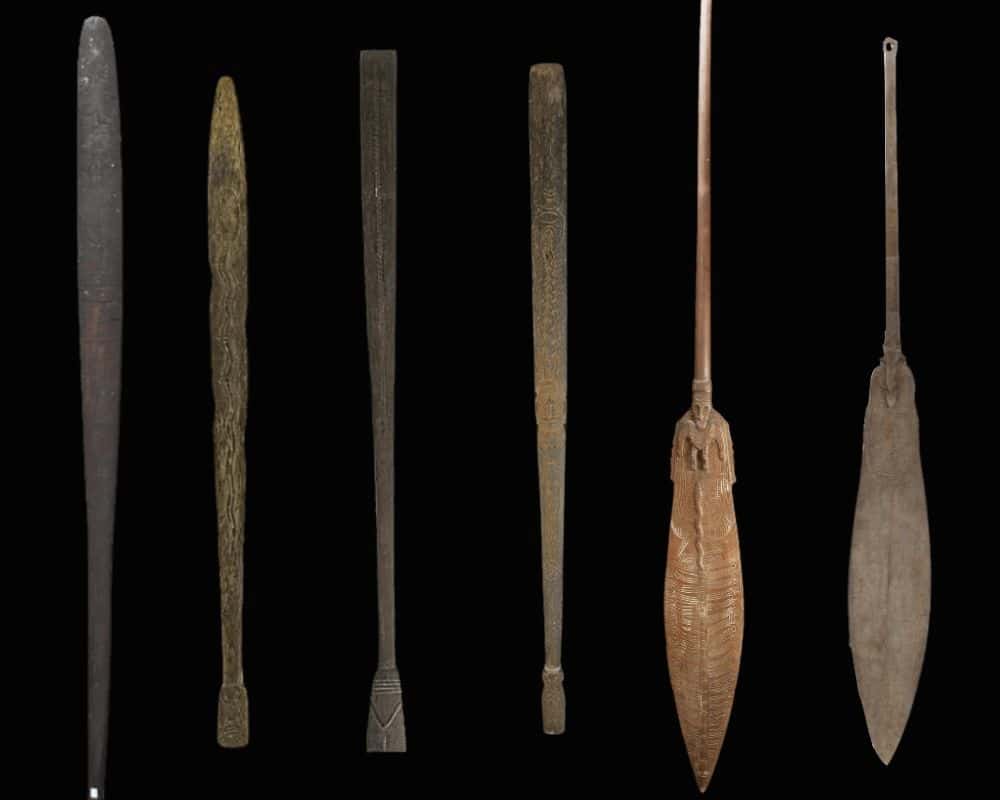
Dance Clubs and dance paddles
Very few clubs from the Huon Gulf were made as weapons. The majority were made to be held by the lead dancer in a tumbuwan dance. Some are made from hardwood but because they were not made to be used fighting many are a light wood.
This area also has Dance paddles presumably for a particular cultural performance.
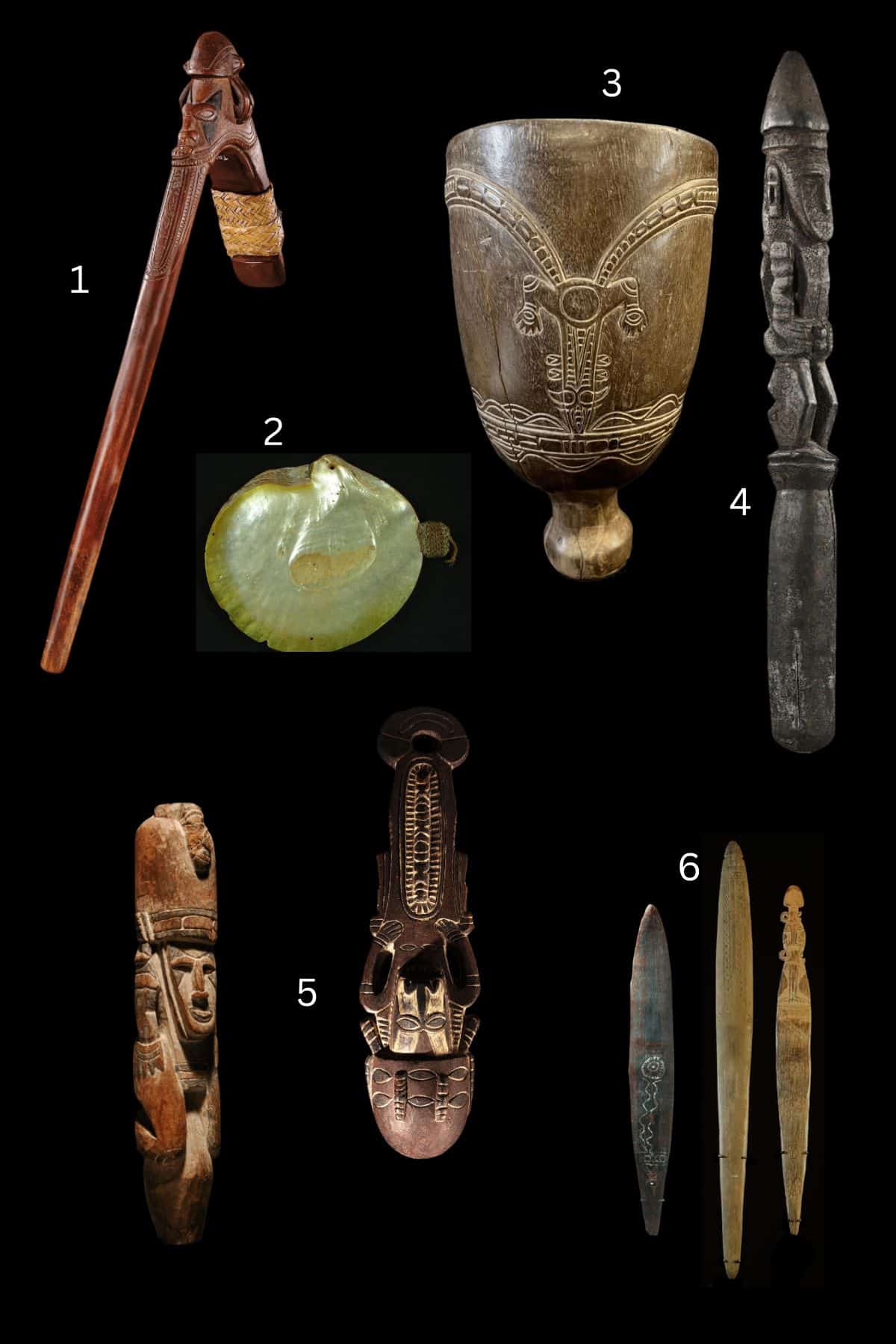
Other Adornments
1. Leg Cuffs made from glass beads
2. Armbands made from beads and bush material
3. Sash made from woven orchid fibre
4. Sash made from shell money
5. Armbands made from mastic on bush material
6. Dog tooth currency necklace
7. leg bands made from glass beads
Huon Gulf Canoe prows
These are not really prows but the front board that holds the canoe sides in place. They are however carved and some intricately painted.
These prows however are not highly sort after as they are percieved to be more ethographic collectable than Oceanic art.
Length varies from 40cm -85cm
